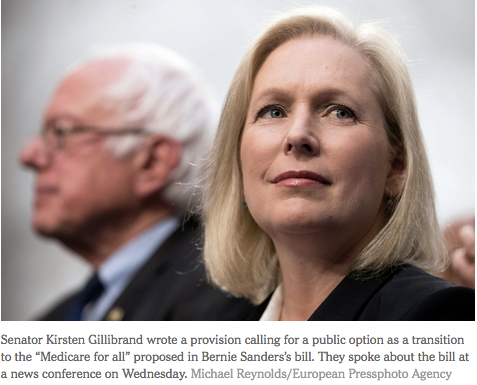In the statements of the bill’s co-sponsors, one can detect an openness to less tranformational approaches to health reform. “This bill is aspirational, and I’m hopeful that it can serve as a starting point for where we need to go as a country,” Senator Al Franken of Minnesota wrote in a Facebook post. He described the bill as a “marker” and “one way to achieve universal coverage.”
Parts of the Sanders bill help establish a road map for what some other strategies might look like.
The provisions are tucked into Title X of the bill and describe the four-year transition between current policy and the Sanders bill’s goal of a Medicare-for-all system. During that interim, some younger Americans would be able to buy access to the traditional Medicare program, which is now mainly for those 65 and up. The provisions would also establish an option for Americans to buy access to a Medicare-like government plan that would be sold on the Obamacare exchanges.
The public option section was written by Senator Kirsten Gillibrand of New York, a longtime proponent of the idea. As part of the Sanders bill, she said, a public option would help the government prepare to administer a full-fledged Medicare-for-all program.
“One part of the bill that I worked with my colleagues to put in was the ability for every American to buy into a nonprofit public option as part of a four-year transition to get to single-payer in this country,” she said during the news conference introducing the bill. “This would create affordable, public health care that is available to any American to purchase in the already available exchanges.”




